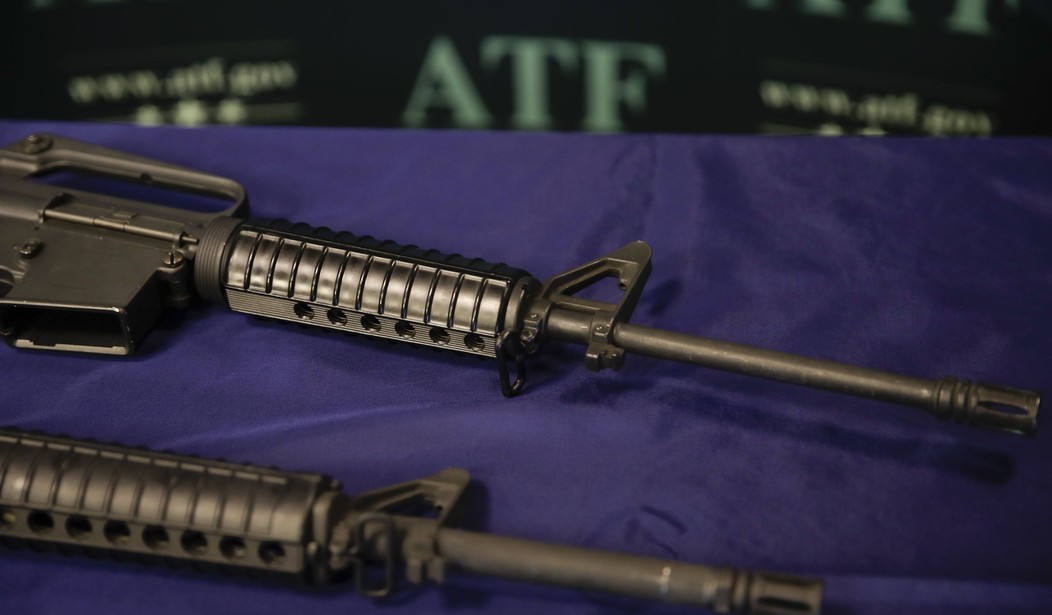In an emphatically worded decision that is sure to shape the future debate on the issue, the United States Fifth Circuit Court of Appeals has ruled the ATF's regulation of so-called "ghost guns" is "unlawful." It has also revealed the "ghost gun" rule to be a limitless power grab in which the ATF claims it has the authority to declare gun parts or unfinished items that could be turned into gun parts as "ghost guns" and that it can decide if the law was broken based on a "case-by-case" review. This would make it impossible for citizens to know if they were in violation of the law until they were arrested.
The case in question, VanDerStok vs. Garland, involved a challenge to the ATF's attempt to regulate the sale and ownership of ghost guns without Congressional authority to do so. Ghost guns, or privately made firearms without serial numbers, have allegedly become a growing concern for law enforcement agencies due to their untraceable nature. The data tell a different story. According to the website of the virulently anti-gun "Everytown" organizations, ghost guns have been linked to 144 incidents since 2020. This is hardly an epidemic that requires extra-constitutional federal action.
The court's ruling centered on the legality of a federal agency criminalizing a heretofore legal activity without Congressional approval nor any need beyond the political desire to be seen to "do something."
The ATF "Final Rule" was issued in April 2022.
The problem with the rule was that the ATF took it upon itself to change the legal definition of a firearm as it exists in the Gun Control Act of 1968.
The bedrock of the GCA and its plethora of requirements and restrictions is the word “firearm.” The GCA defines a “firearm” as: “(A) any weapon . . . which will or is designed to or may readily be converted to expel a projectile by the action of an explosive; (B) the frame or receiver of any such weapon; (C) any firearm muffler or firearm silencer; or (D) any destructive device.” Id. at § 921(a)(3)(C). As no definition for “frame or receiver” is given in the GCA, ATF previously defined a “frame or receiver” in 1978 as: “That part of a firearm which provides housing for the hammer, bolt or breechblock, and firing mechanism, and which is usually threaded at its forward portion to receive the barrel.” Title and Definition Changes, 43 Fed. Reg. 13531, 13537 (Mar. 31, 1978). This definition remained unchanged for over forty years, until ATF issued the Final Rule in 2022.
What the "Final Rule" did was redefine the terms "frame" and "receiver" to include "a frame or receiver parts kit that is designed to or may readily be completed, assembled, restored, or otherwise converted to function as a frame or receiver, i.e., to house or provide a structure for the primary energized component of a handgun, breech blocking or sealing component of a projectile weapon other than a handgun.”
The plaintiffs sued on the grounds that the ATF rule exceeded the authority granted by Congress and asked the federal district court to declare the rule unlawful. In March 2023, a federal judge in the Northern District of Texas ruled exactly that and imposed a nationwide injunction on ATF enforcement of the regulation (read the decision). A panicked Biden White House appealed to the Fifth Circuit to set aside the injunction and lost. They then went to the Supreme Court, where, in a 5-4 decision, the injunction was set aside pending the Fifth Circuit's hearing of the case, which it did on September 7.
Now, the Fifth Circuit has spoken.
By expanding the types of items that are considered “firearms,” ATF has cast a wider net than Congress intended: under the Final Rule, the GCA will catch individuals who manufacture or possess not just functional weapons, but even minute weapon parts that might later be manufactured into functional weapons. The Final Rule purports to criminalize such conduct and impose fines, imprisonment, and social stigma on persons who, until the Final Rule’s promulgation, were law-abiding citizens. ATF cannot so transform the GCA to include aspects of the nation’s firearm industry that were previously—and purposefully— excluded from the statute.
Judge Andrew Oldham (Trump appointee) was more scathing. He points out that the ATF's definition of "readily convertible" effectively makes all modern sporting rifles illegal because they can be "readily convertible" into fully automatic weapons. He also observed the sale of weapon parts is treated as though they were a "ghost gun," and the ATF reserves the right to determine if something is a "ghost gun" based on “a case-by-case evaluation of each kit.”
The Final Rule is limitless. It purports to regulate any piece of metal or plastic that has been machined beyond its primordial state for fear that it might one day be turned into a gun, a gun frame, or a gun receiver. And it doesn’t stop regulating the metal or plastic until it’s melted back down to ooze. The GCA allows none of this.
This rule is an illegal, unconstitutional travesty. It has nothing to do with addressing the non-problem of "ghost guns." It has everything to do with attaching the potential of committing a federal felony to every aspect of gun maintenance and gunsmithing and preventing you from knowing if you are breaking the law.
The case was remanded back to the original judge to fashion a remedy. What that will be, we don't know. What we can count on is that this case is headed back to the Supreme Court. As in the case of Trump's bump stock rule (Trump's Bump Stock Ban to Face Supreme Court Scrutiny), the case will have as much to do with letting unelected bureaucrats govern the country under "Chevron deference" as it will have to do with the Second Amendment.

